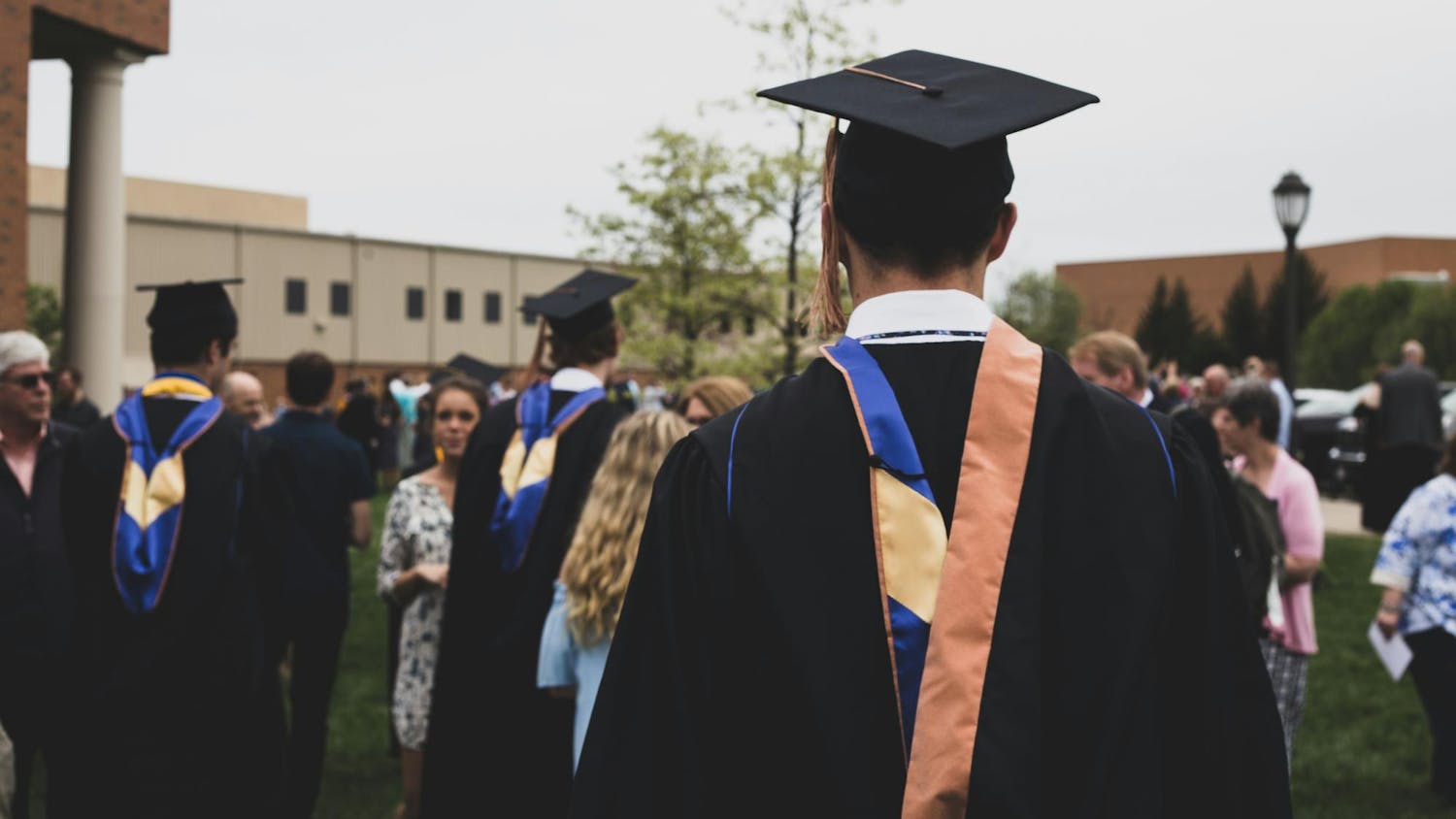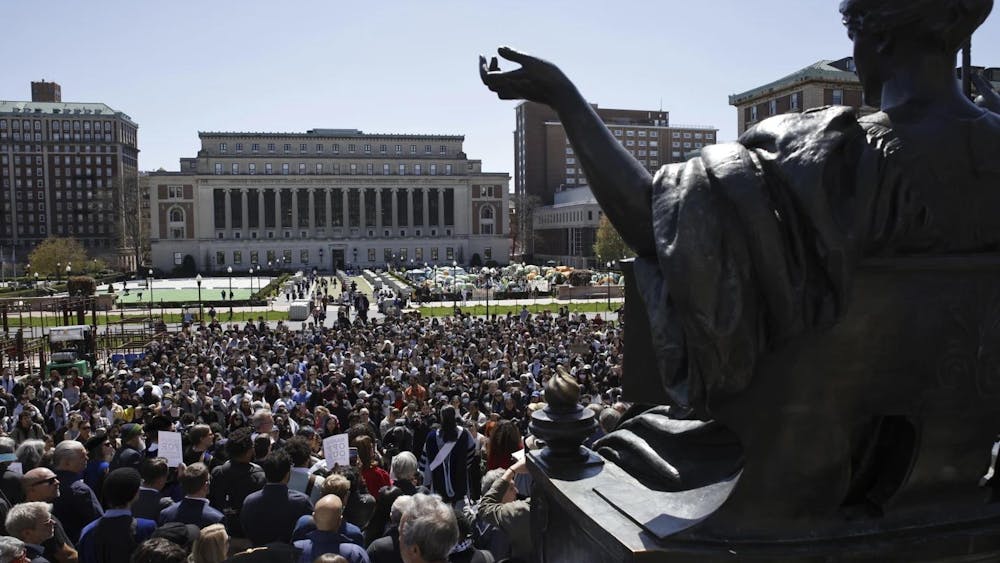The height of spire of the Basilica of the Sacred Heart makes that building the tallest on Notre Dame's campus, taller than both the golden dome and the Hesburgh library.
Within that tower hangs the oldest carillon in all of North America, the 23 bells Fr. Sorin himself purchased and brought over from France after he founded the University. Basilica organist Daniel Bayless said although some of the original ropes, pulleys and weights from the carillon's mechanical system remains in the tower, most of the notes tolled over God Quad are programmed and played through a computer system.

"The computer system automatically tolls out the hour chimes and automatically plays the alma mater," he said. "Twice a day, at noon and six p.m., we have hymns that are played which you can hear on the quad. At noon and six also the Angelus prayer is rung, which is a series of bells played before the hour is rung."
To program the tolling, Bayless said he can play a series of notes into a keyboard located next to the computer system in the sacristy of the Basilica.
"Basically, there's an electronic connection between here and the tower so whenever you hit a key on the keyboard, an electromagnet moves a clapper and makes the sound," he said. "You can play it down here where it's relatively warm and comfortable instead of having to go upstairs every time."
To qualify as a full carillon, a set must contain at least 23 bells, Bayless said. The Basilica has 23, which can be played electronically from the sacristy and otherwise accessed by a narrow, winding staircase up the tower. Bayless's job brings him up the tower every few months or so, he said.
The largest bell in any carillon is called the "bourbon," Bayless said, and the one in the Basilica is known as the St. Anthony Bell. This bell is positioned lower down in the tower, closer to the ground, than the other 22.
"There's a tradition in Roman Catholicism that every bell is given a name, and [the largest one] is named St. Anthony," he said. "Before it comes in the tower, it's actually washed with holy water, which is called baptizing the bell. It has nothing to do with the sacrament of baptism, of course, but the tradition is that every time it rings, a prayer to St. Anthony goes up."
"All the bells in the tower have names and prayers associated with them. Someday I'm going to make a catalog of the names of all of them, but at this point that information is gone, except for where it's written on the bells themselves."

Bayless said each of the bells has two clappers, one located inside for the old carillon system and one positioned outside for the electronic system. A clavier, or manual keyboard, looks like an organ and is located partway up the tower to play the mechanical system.
"[The clavier] is really out of adjustment and it doesn't play well right now, which is something we need to look into getting money to fix, but you play with your fists," he said. "It was installed in the [1950s] because originally, there was no way to manually play the instrument."
The 22 bells besides the bourbon are hung above the platform where the clavier is located, spread to distribute the weight equally within the tower, Bayless said.
"Fr. Sorin picked all the names on each bell, one is Mary of the Annunciation, another is Mary of the Seven Dolors, or Our Lady of Sorrows who is the patron of the [Congregation of] Holy Cross," he said. "They're made of an alloy ... and they were originally gleaming, like just pure metal.
"Over the years, they've developed what we call a patina, this tarnish," Bayless said. That changes their sound a bit; it makes them a bit more sweet-sounding and not as harsh-sounding.
"This bell is part of the hour system, and you can see right here with the striker hits, the patina has worn away and it gleams? That's the original color."
Bayless said the tower walls surrounding the bells are intentionally left open to let the sound ring out, and the grates are visible from the ground view. In the original "flying clapper system," he said people documented hearing the bells as far away as in downtown South Bend.
"In a flying clapper system, as the bell goes back and forth the clapper actually goes with the bell and hits on the upper part of the bell," Bayless said. "There are other traditions where the bell doesn't swing quite as far and so the clapper comes up and hits the bottom part of the bell before the bell goes back, which is called a hanging clapper."
The flying clapper, which cannot be used with the electronic method of playing the bells, produced much louder and faster sound, accounting for the toll ringing throughout the city, he said.
"In a dream world, hopefully we'll get them flying again someday," he said. "It was stopped because they thought it was making too much force on the tower, but eventually we'll do an engineering survey and see if we can get it flying again."
When Pope John Paul II declared the church a Basilica, Bayless said he referred specifically to the carillon, which is commemorated by a plaque inside the building.
"We know that the pleasant harmony of America's oldest carillon reportedly resounds from Sacred Heart," the charter reads. "We hope that its sound will not only calm and gladden human hearts but will also call those who hear it to faith and Christian truth that it will stir their spirits."
Contact Ann Marie Jakubowski at ajakubo1@nd.edu












